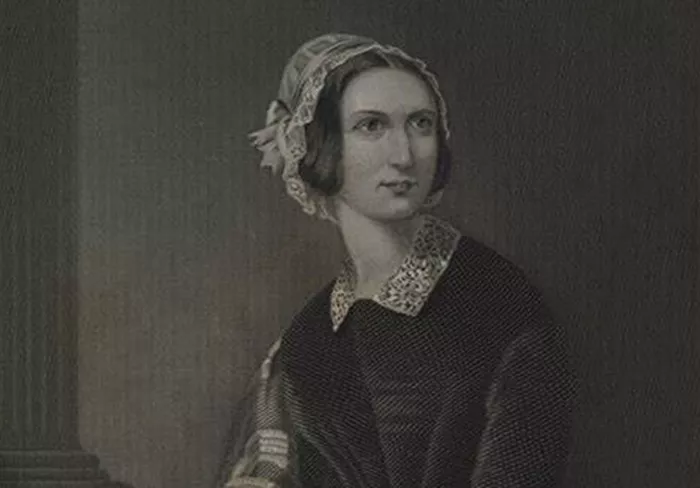Mary Howitt (1799–1888) was a prominent 19th Century British poet, writer, and translator, whose work contributed significantly to the landscape of British poetry during the Victorian era. Although often overshadowed by some of her more famous contemporaries, Howitt’s poetry and prose deserve scholarly attention for their unique voice, moral earnestness, and imaginative qualities. This article explores Mary Howitt’s life, her poetic contributions, and her place within the wider context of 19th Century British poetry. It also compares her work with other British poets of the same period, highlighting common themes and distinguishing features.
Mary Howitt
Born Mary Botham in Coleford, Gloucestershire, England, she married William Howitt, a fellow writer, in 1821. Together, they formed a literary partnership that influenced her writing deeply. Mary Howitt’s early life was shaped by the Romantic literary movement, which valued emotion, nature, and individual imagination—elements that appear in her poetry. She was also influenced by the Quaker faith and moral earnestness, which often colored her work’s themes.
As a 19th Century British poet, Mary Howitt worked during a period rich in literary innovation. British poetry was evolving beyond Romanticism into Victorian themes of morality, social issues, and domestic life. Howitt’s writing reflects this transition, blending the romantic imagination with Victorian social consciousness.
Mary Howitt’s Poetry: Themes and Style
Mary Howitt’s poetry often focused on nature, childhood, and morality. Her poems carried simplicity and clarity, making them accessible to a wide audience. One of her most famous poems, The Spider and the Fly, exemplifies her skill in combining narrative with moral lessons. This poem, widely anthologized, warns against deceit and the dangers of flattery, showing Howitt’s interest in ethical themes.
Her poetic style is characterized by:
Simple diction: Unlike some of her more ornate contemporaries, Howitt favored straightforward language.
Didactic tone: Many poems have clear moral or instructional messages.
Narrative elements: Stories told through verse, often with characters and clear plots.
Use of nature: Inspired by Romanticism, nature is both a setting and a symbol in her work.
Her poetry was often aimed at children or young readers, which was common in Victorian Britain, where literature was used to educate as well as entertain.
Howitt’s Contributions Beyond Poetry
Mary Howitt was not only a poet but also a prolific translator and prose writer. She translated works from German, including those of the Brothers Grimm, thereby enriching British literary culture by introducing continental fairy tales and folklore. This role was vital in spreading Romantic and Victorian literary ideas across Europe and vice versa.
Her translations reveal a broader literary sensibility and a commitment to cross-cultural dialogue. These works also influenced British poetry, as fairy tales and folklore often inspired poetic themes of wonder, morality, and the supernatural.
Mary Howitt in the Context of 19th Century British Poetry
Comparison with Romantic Poets
Though born near the end of the 18th century, Mary Howitt’s career overlaps with both the Romantic and Victorian periods. The early 19th Century British poets like William Wordsworth and Samuel Taylor Coleridge emphasized nature, emotion, and the sublime. Howitt’s nature poetry reflects this influence but is more moralistic and less philosophically complex.
Unlike Wordsworth’s often introspective tone, Howitt’s poems tend to teach clear lessons. She shares with Romantic poets a respect for nature’s beauty and power but integrates this with Victorian ideals of moral instruction.
Comparison with Victorian Poets
As Victorian poetry developed, themes of social responsibility, faith, and family life became prominent. Poets like Alfred, Lord Tennyson, and Elizabeth Barrett Browning grappled with these subjects in sometimes complex and dramatic ways. Mary Howitt’s poetry is less grand but aligns with the Victorian emphasis on morality and domestic virtues.
Her work is comparable to that of other Victorian women poets such as Christina Rossetti and Adelaide Anne Procter, who also wrote accessible poetry often aimed at younger audiences or women. Like them, Howitt emphasized themes of faith, virtue, and the natural world, but with a simpler style and often more explicitly didactic purpose.
The Role of Gender in Mary Howitt’s Career
In the 19th Century, British poetry was largely dominated by male voices, although women were gaining recognition. Mary Howitt, as a female poet, often addressed themes appropriate for women and children, which reflected the Victorian ideal of “separate spheres” — women’s role in moral and domestic education.
Howitt’s success as a writer and translator helped pave the way for other women poets. Her collaboration with her husband William also reflects the common practice of literary couples working together, which sometimes blurred individual authorship but allowed women greater access to publishing.
Legacy and Critical Reception
Mary Howitt was popular in her own time, especially for children’s literature and moral poetry. However, her work fell somewhat out of critical favor in the 20th century, overshadowed by more experimental or politically charged poets. Recently, there has been renewed scholarly interest in 19th Century British poets like Howitt who contributed to the fabric of Victorian literary culture, particularly in women’s writing and children’s literature.
Her poetry, with its clear moral messages and lyrical simplicity, provides important insight into Victorian values and literary tastes. As a British poet who bridged Romantic ideals and Victorian social concerns, Howitt occupies a unique position in literary history.
Conclusion
Mary Howitt’s contributions to 19th Century British poetry are significant for their moral clarity, accessibility, and blend of Romantic and Victorian influences. While she may not have reached the same fame as Wordsworth or Tennyson, her work was influential in children’s literature and the moral education of the era. Her role as translator and prose writer further enriched British literary culture.
As a British poet, Mary Howitt exemplifies the diverse voices shaping 19th Century British poetry, particularly women’s contributions. Her work remains a valuable subject for study, illustrating the period’s complex relationship between poetry, morality, and popular readership.

